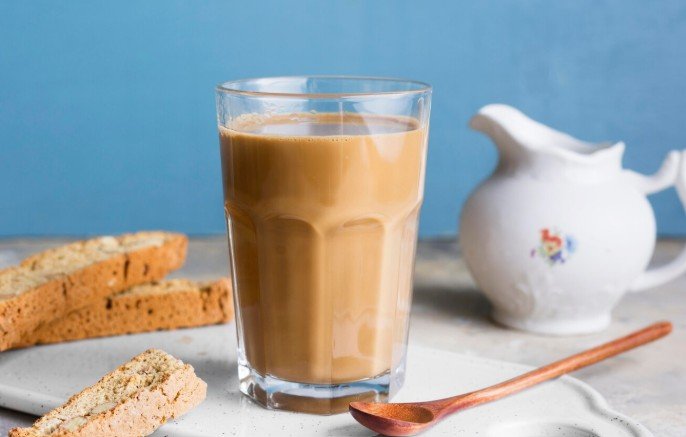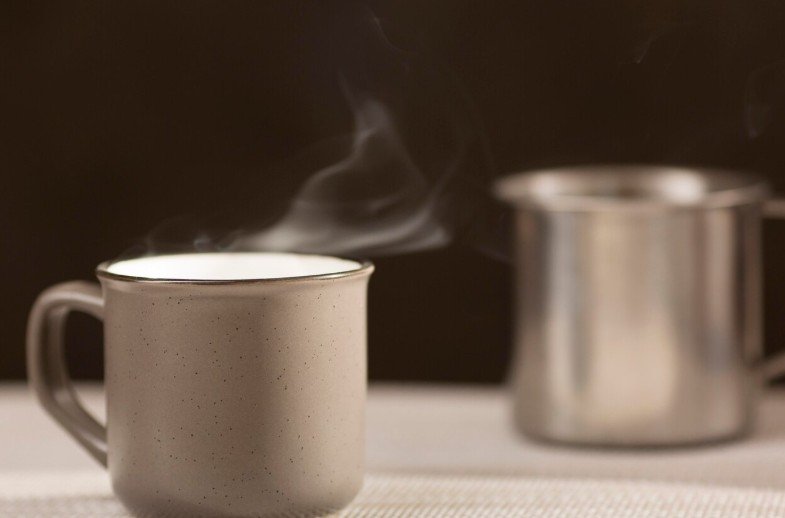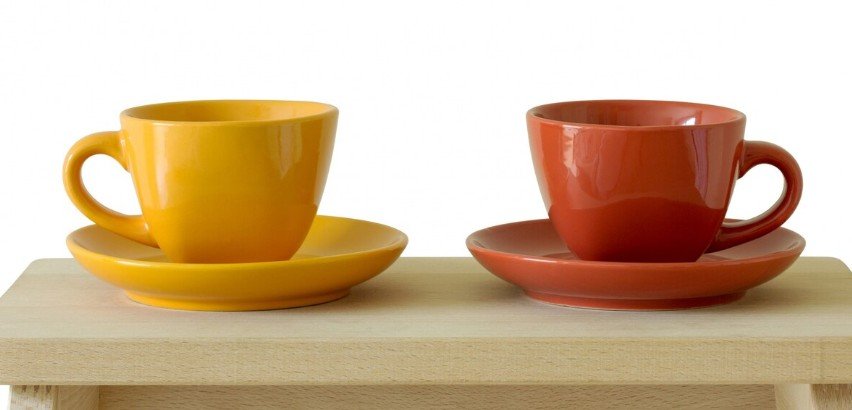All over the world, tea and milk are two popular drinks. Isn’t it interesting that you can drink a hot beverage quicker from a saucer compared to a cup? This simple practice which exists around the world, actually follows laws of physics and thermodynamics. It will look into the reasons for this phenomenon and explore the science that allows it to happen.
Table of Contents
#1. Understanding the Basic Concept
We can drink our hot tea or milk much quicker from a saucer than a cup because the liquid in the saucer cools down more quickly. The process operates under the main principles of surface area and heat dissipation.

What is Surface Area, and Why Does It Matter?
- A saucer has a much larger surface area compared to the narrow opening of a cup.
- When you pour hot tea or milk onto a saucer, the liquid spreads out in a thin layer, exposing it to more air.
- More surface area means more exposure to the surrounding air, which accelerates the cooling process.
How Heat Dissipation Works
- The more the surface area exposed to the air, the faster the heat can escape.
- In a saucer, the thin layer of hot liquid quickly loses heat due to its direct contact with cooler air.
- In contrast, a cup has a deeper design, which restricts the exposure of the liquid surface to the air, slowing down the cooling process.
#2. The Science of Heat Transfer
Heat transfer is a natural process where thermal energy moves from a hotter object to a cooler one. In the case of hot tea or milk, heat transfer occurs in three primary ways:
1. Conduction
- Heat travels through the liquid itself and the material of the saucer.
- In a saucer, the heat is distributed more evenly due to the thin layer of liquid.
2. Convection
- Hot steam rises from the surface of the liquid, transferring heat to the surrounding air.
- The larger surface of the saucer allows for more steam to escape, enhancing the cooling process.
3. Radiation
- Heat is directly lost to the surrounding environment.
- A saucer, being wide and shallow, radiates heat faster than a cup.
#3. Why a Cup Retains Heat Longer

- A cup has a smaller surface area and a deeper design.
- The walls of the cup trap the heat, causing the liquid inside to stay hot for a longer duration.
- Even though some heat escapes through steam, most of it is contained within the cup.
- As a result, tea or milk in a cup cools down much slower, making it harder to sip quickly without burning your mouth.
#4. Practical Examples of This Concept
Example 1: Cooling Hot Soup
Like with tea, milk or other liquids, you can cool hot soup down quicker if you pour it onto a wide plate instead of a deep bowl. Having a bigger surface area allows heat to get lost more rapidly.
Example 2: Cooking and Baking

It is common for bakers to put just-baked cakes or pastries on wire racks to help them cool more quickly. When food is placed on a rack, more surface comes into contact with air which speeds the cooling process.
Example 3: Natural Phenomenon
You can also observe heat dissipation happening in the natural world. When compared to ponds, lakes cool down more slowly due to their large size and capacity to keep heat.
#5. Cultural Significance of Sipping from a Saucer
The practice of sipping hot beverages from a saucer has a long history, and its significance varies across different cultures:
1. Russia
In Russia, you use the word “nalivka” when talking about sipping tea from a saucer. It’s an age-old practice of sipping hot tea from a cup without having to wait for it to get colder.
2. India
You can often find people in India pouring hot tea into a saucer to cool it fast, mainly at crowded places where time is short.
3. Turkey
While the Turkish usually serve tea in tulip glasses, the quick cooling is understood since the amount of tea is small.
4. Middle East
In the region, coffee is served in a wide, shallow cup, so it can cool down quickly before you enjoy it.
#6. The Role of Material in Cooling
The material of the saucer also plays a crucial role in how fast the liquid cools.
- Ceramic or Porcelain Saucers: These are commonly used because they conduct heat efficiently and remain cool to touch.
- Metal Saucers: Metal conducts heat faster, making the liquid cool even more quickly.
- Glass Saucers: Glass takes slightly longer to cool because it is a poor conductor of heat.
#7. Comparing Saucer vs. Cup: A Scientific Experiment

Let’s consider a simple experiment to understand the difference in cooling between a saucer and a cup:
- Pour an equal amount of hot water (say, 100 ml) into a cup and a saucer.
- Measure the starting temperature of the water in both the cup and the saucer.
- After every minute, measure the temperature again for the next 10 minutes.
- You will notice that the water in the saucer cools much faster than the water in the cup.
#8. Why This Happens
- The saucer has a larger surface area exposed to the air.
- The thin layer of liquid allows for faster heat loss.
- The cup, being deeper, traps the heat and slows the cooling process.
#9. Myths and Misconceptions About Sipping from a Saucer

Despite its scientific explanation, several myths are associated with sipping from a saucer:
- Myth 1: It Changes the Taste of Tea or Milk
- Truth: Sipping from a saucer only cools the liquid; it does not change its taste.
- Truth: Sipping from a saucer only cools the liquid; it does not change its taste.
- Myth 2: It Is an Old-Fashioned Practice
- Truth: While the practice may seem old-fashioned, it is still used for practical reasons.
- Truth: While the practice may seem old-fashioned, it is still used for practical reasons.
- Myth 3: It Is Unhygienic
- Truth: It is not unhygienic if the saucer is clean. The practice is simply a method of faster cooling.
- Truth: It is not unhygienic if the saucer is clean. The practice is simply a method of faster cooling.
#10. Modern Applications of This Concept
Understanding why a saucer cools tea or milk faster has practical applications beyond just drinking hot beverages:
1. Efficient Cooling in Cooking
Spreading hot sauces, soups, or gravies on a wide plate cools them faster.
2. Food Safety

Rapid cooling can prevent bacterial growth in freshly cooked foods, making them safer to eat.
3. Energy Efficiency
Using wide containers for cooling can save energy in industrial processes where rapid cooling is needed.
#11. Frequently Asked Questions (FAQs)
Q1: Can I sip other hot beverages using a saucer?
Yes, you can use a saucer to cool any hot liquid, including coffee, hot chocolate, or even herbal teas.
Q2: Does the color of the saucer affect cooling?
Not significantly. However, darker colors may absorb a bit more heat, but the difference is minimal.
Q3: What if I use an insulated saucer?
An insulated saucer may slow down the cooling process, which goes against the purpose of using a saucer for faster cooling.
Q4: Can I use this method for solid foods?
Yes, spreading hot solid foods (like freshly cooked vegetables) on a wide plate can help them cool faster.
Q5: Is sipping from a saucer considered rude in modern settings?
This depends on cultural norms. In some places, it may be seen as old-fashioned or impolite, while in others, it is perfectly acceptable.
Conclusion
In conclusion, the reason we are able to sip hot tea or milk faster from a saucer rather than a cup is rooted in basic principles of physics — surface area and heat dissipation. The wider surface area of a saucer allows the liquid to cool faster, making it safe to sip without burning your mouth.
So, the next time you are in a hurry but want to enjoy your hot tea or milk without burning your tongue, remember the humble saucer — a simple, science-backed solution.
Visit our websites for additional information.

